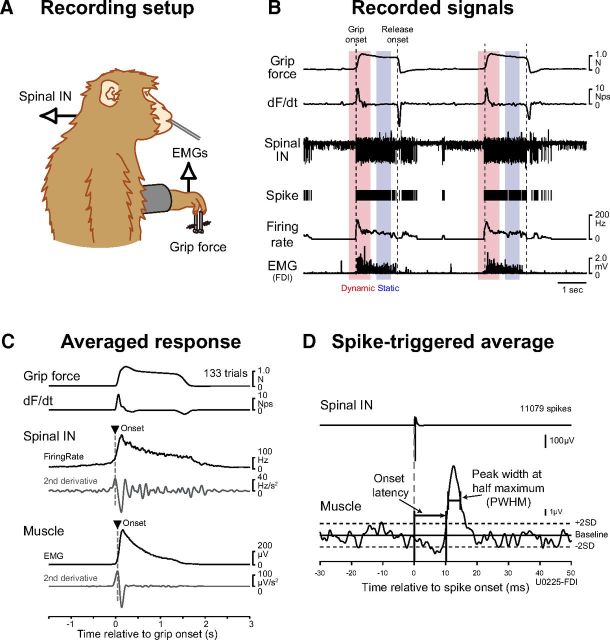Figure 1.
Recording setup and example of recordings. A, Recording configuration. Monkeys were trained to pinch two spring-loaded levers with their index finger and thumb (precision grip task). Spinal neuron and muscle activities were recorded simultaneously. An applesauce reward was given through a feeding straw for every successful trial. B, Recordings during a precision grip task. Grip force exerted by the monkey's index finger and thumb, the rate of change the dF/dt, spinal extracellular recording (Spinal IN), unit discharge timing (Spike) and instantaneous firing rate, and EMG signals (EMG) recorded from the FDI are shown from two successive trials. Red and blue rectangles indicate dynamic and static periods where peak firing rate and mean tonic firing rate were calculated (red: −0.25 to 0.5 s after grip onset; blue: −0.75 to −0.25 s before release onset). C, Averaged response of Spinal IN and EMG activity. The firing rate and EMGs were aligned to grip onset and averaged across trials. The onset timing of PreM-IN and EMG signals was defined as the peak time of the second derivative of the averaged responses (triangles). D, Measurements of rectified EMG spike-triggered averages. Onset was identified at the time point when the peak (or trough) crossed within ±2 SDs of the baseline mean. Onset latency was measured relative to the onset of the triggered neuron action potential. Peak width at half-maximum was measured as the width of the peak (trough) halfway between its maximal (minimal) value and the baseline mean.

